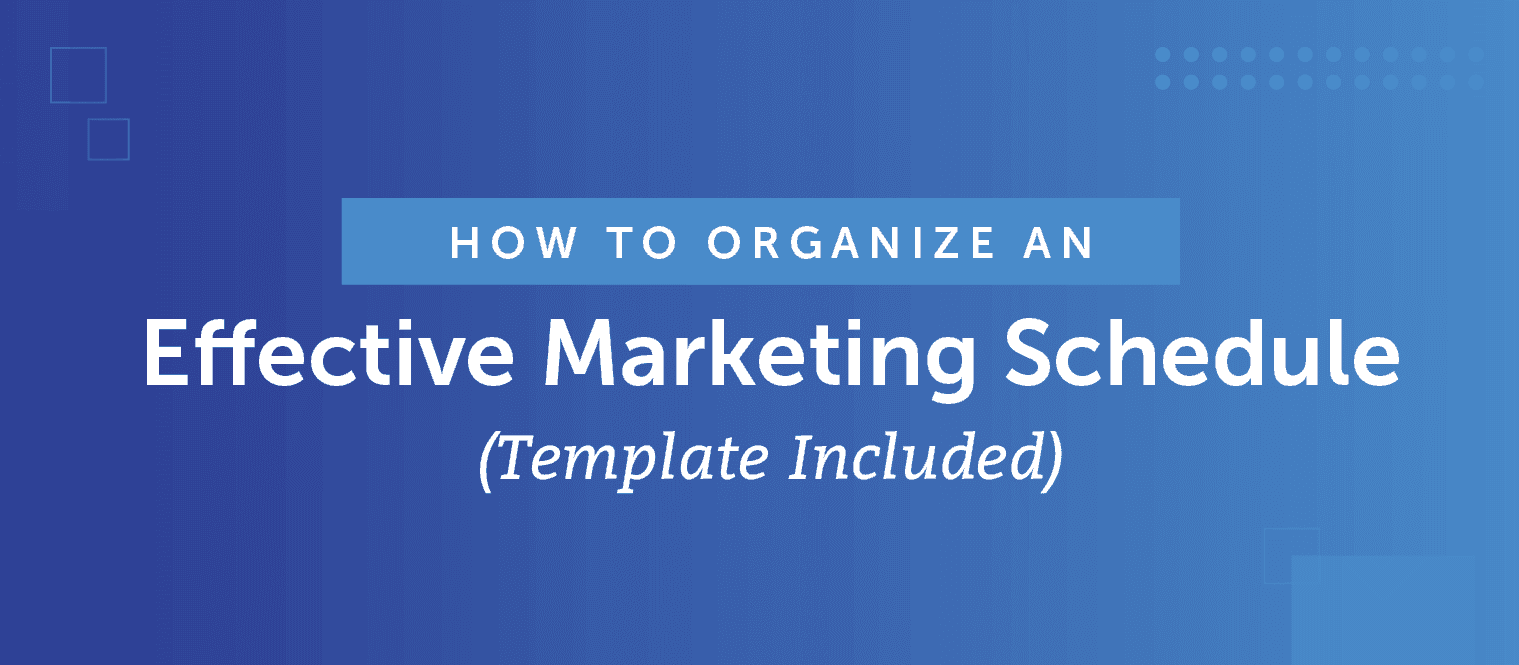How To Improve Your Keyword Research With Latent Semantic Indexing
 What's the first thing you think of when you hear "latent semantic indexing"?
The answer is probably, "uh, what?"
It's okay if that's the case. Fortunately, it's a simple concept to get a grip of (scary-sounding technical language aside). In fact, you're probably familiar with the concept, even if you've never heard of the term.
So, what is LSI, exactly?
In simple terms, it describes the algorithmic process search engines use to identify related words. Understanding how it works is essential to conducting smart keyword research and crafting an effective SEO strategy. The more you get it right, the easier it is to create content that ranks higher for long tail keywords and drives more traffic to your content.
Assuming your content is good, that could even mean more revenue for your business.
Interested in learning more? Then get ready. We're about to go full-nerd here.
What's the first thing you think of when you hear "latent semantic indexing"?
The answer is probably, "uh, what?"
It's okay if that's the case. Fortunately, it's a simple concept to get a grip of (scary-sounding technical language aside). In fact, you're probably familiar with the concept, even if you've never heard of the term.
So, what is LSI, exactly?
In simple terms, it describes the algorithmic process search engines use to identify related words. Understanding how it works is essential to conducting smart keyword research and crafting an effective SEO strategy. The more you get it right, the easier it is to create content that ranks higher for long tail keywords and drives more traffic to your content.
Assuming your content is good, that could even mean more revenue for your business.
Interested in learning more? Then get ready. We're about to go full-nerd here.
How To Improve Your Keyword Research With Latent Semantic Indexing
Click To TweetWhat Is Latent Semantic Indexing?
Let's start with the technical explanation first. According to SEMPO, latent semantic indexing "uses word associations to help search engines know more accurately what a page is about." It's essentially an algorithmic principle built into search engines to process synonyms and understand topical relationships between words.LSI is built into search engines to process synonyms & topical relationships between words.
Click To Tweet
Why Is LSI Necessary?
Say you're talking to a friend about marketing. You start discussing how content calendars work. Throughout the discussion, you also use the term editorial calendar interchangeably. Since you're intelligent human beings, you can understand that when someone says "content calendar," they might also mean "editorial calendar." If one of you had mentioned CoSchedule, you might understand that's a content calendar solution. The same would apply if someone said they use a "printable calendar template." You know those are all semantically related terms, connected to the same topic. Search engines aren't humans. They can't naturally process language like you and your friend in the example above.Search engines aren’t humans. They can’t naturally process language like humans can.
Click To TweetWhat Are LSI Keywords?
These are the actual terms and phrases that are semantically related to one another. This means words that refer to the same topic (or drill deeper within a topic). For example, "Tesla Motors" is semantically related to "electric cars," since the company makes electric vehicles.LSI keywords are actual terms and phrases that are semantically related to one another.
Click To Tweet
Benefits Of LSI-Driven Keyword Research
This is where LSI starts to matter for you, the intrepid content marketer. Incorporating LSI keywords can help your content rank for a wider variety of search terms. This means more visibility in search results, and more traffic back to your blog or website. They can also help you create content that more thoroughly satisfies what searchers are looking for.Not using LSI keywords? You're missing out on ranking higher and getting more traffic.
Click To Tweet5 Ways To Find LSI Keywords
You need to know how to find LSI keywords before you can use them. Fortunately, this isn't difficult. You can even use a lot of the keyword research tools you're probably already familiar with.1. Use The LSI Keyword Generator
One quick tactic is to use a tool called the LSI Keyword Generator. Just type in a keyword or topic, and it'll instantly generate a list of related terms. Best of all, it's completely free.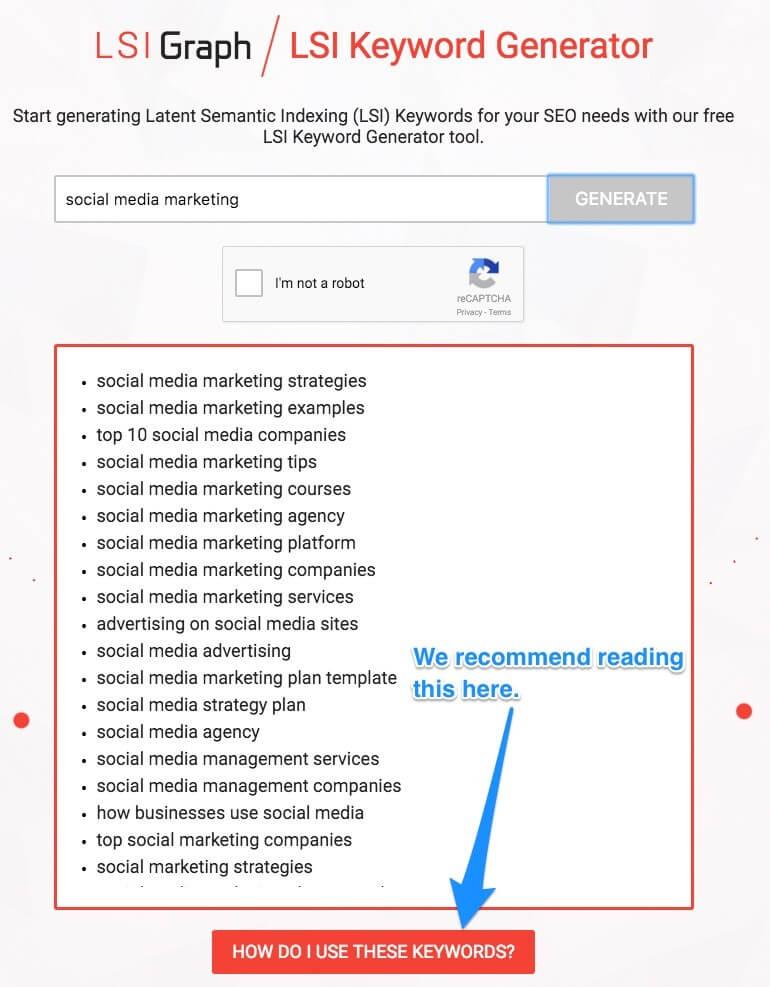
2. Look At Related Searches In Google
This tactic is great because it leverages actual search terms. These are also terms Google can clearly see are related. Just try searching a given keyword, then scroll down to the bottom of the page. You now have eight different LSI variations to inspire your keyword research.
3. Use The Google Keyword Planner
1. Access the Keyword Planner and select the first option shown below.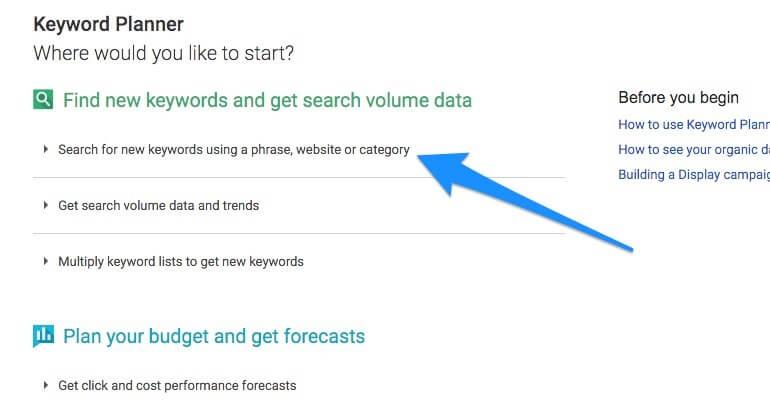 2. Once you've entered a handful of keyword terms, you'll see more related keyword groupings under the Ad Group Ideas tab.
2. Once you've entered a handful of keyword terms, you'll see more related keyword groupings under the Ad Group Ideas tab.
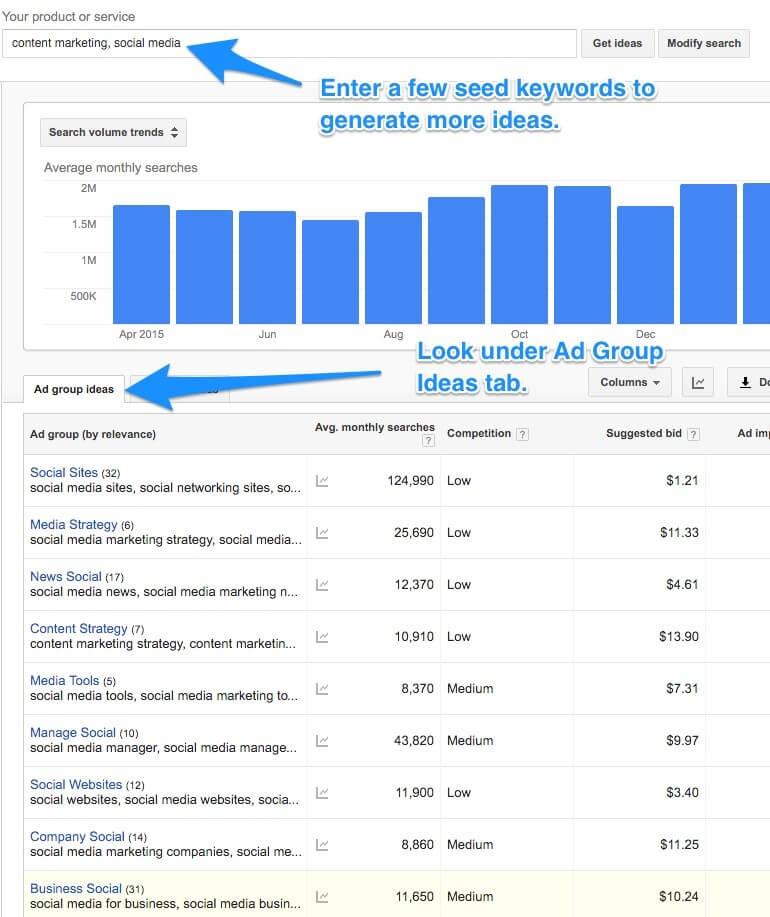 3. Clicking into any of these keyword groupings will show you related keywords.
3. Clicking into any of these keyword groupings will show you related keywords.
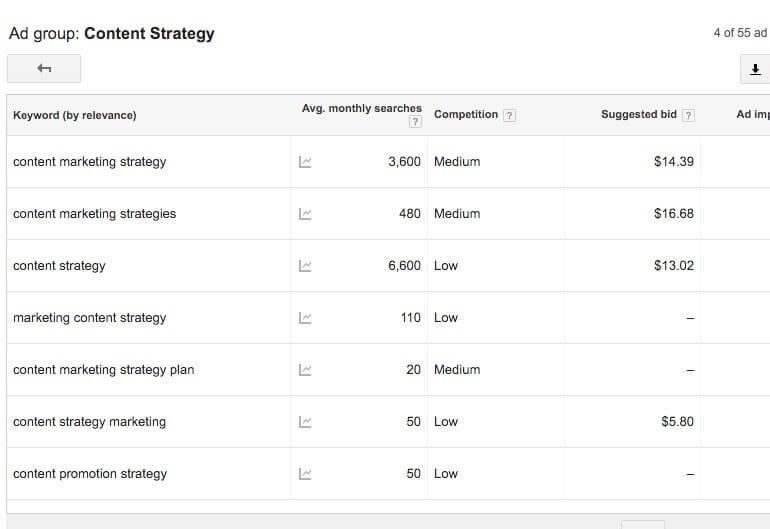
4. Use The New-And-Improved Ubersuggest
Try using Ubersuggest. This classic keyword tool (which pulls in Google autocomplete data) recently received an overhaul. It's now better than ever, and this nifty video will show you how it works.5. Use the SERPs Keyword Database
Formerly known as Keywordini, this free keyword tool is useful for finding keywords related to a given topic and fast. Just enter a keyword, click the button, and you're on your way in seconds.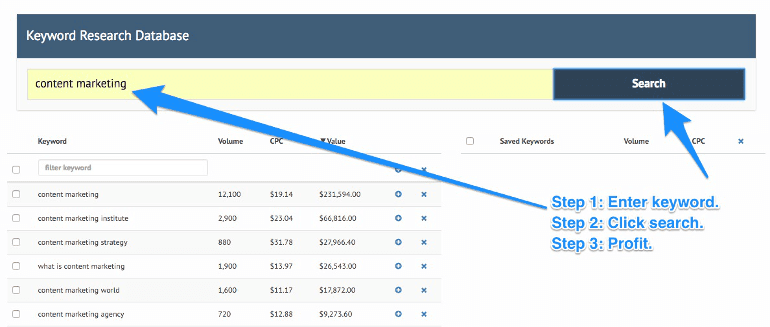
Here's an easy way to supercharge your #keyword #research
Click To TweetHow to Select The Right LSI Terms
Once you've generated a list of possible phrases, it's time to narrow down best options you'll use. The goal is to find terms that are most directly related and have a decent amount of search volume.It’s important that the LSI terms you use align with the search intent of your primary keyword.
Click To TweetStep 1: Understand the Searcher Intent Behind Keywords
It's important that the LSI terms you use align with the search intent of your primary keyword. This requires developing an understanding of what people are looking for when they search the keywords you're targeting. You don't want to guess at this. You want to know, as best you can, what your audience needs from your content.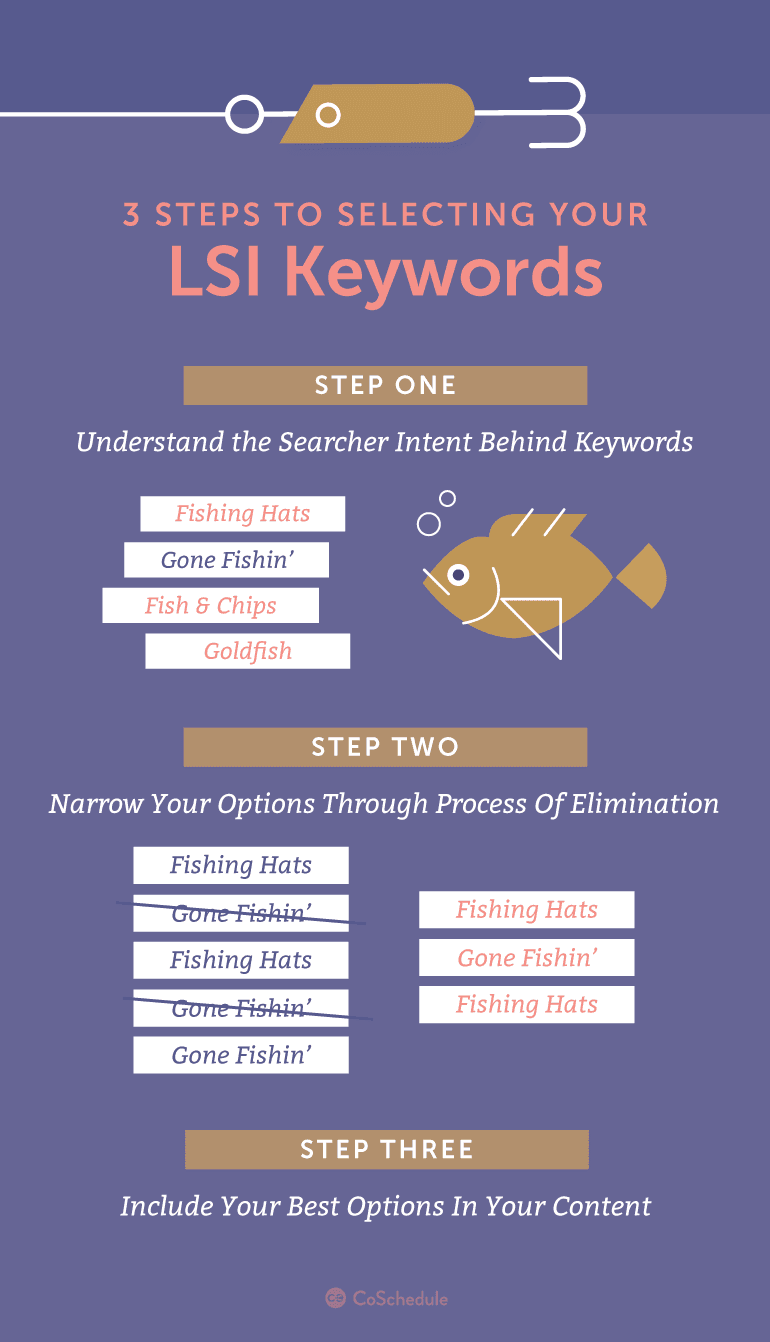 This will give you a good idea of what your own content needs to address the topic.
This will give you a good idea of what your own content needs to address the topic.
Step 2: Narrow Your Options Through Process Of Elimination
Start by weeding out terms that obviously don't fit. These are terms that aren't quite directly related to the topic of your post.Ideal LSI keywords should essentially fit underneath your primary keyword.
Click To TweetStep 3: Choose The Best Options From What's Left
Next, copy and paste what's left into the keyword tool of your choice. Pick terms that have a decent amount of search volume (but not more than your primary keyword). If you uncover keywords that get searched more than your main topic, that may be a sign you should be targeting that term instead. It's also important to make sure your selected LSI keywords directly fit your topic.
How To Implement LSI Keywords Into Your Content
Once you've selected your LSI keywords, it's time to determine where they'll go in your post. Start by identifying your blog post topic and a good primary keyword to focus on. Then, identify other keywords that relate to sub-points beneath that topic. For example, if you were writing a post about the different styles of restaurants (this is really generic, we know, but it's just an example), your main keyword might be something like, "styles of restaurants." Then, each LSI keyword might be a specific style of restaurant.
For another example, "pepperoni pizza" and "cheese pizza" are related terms (both are different types of pizza). If a web page were all about pizza, and pizza was the primary keyword, then specific types of pizza could be used as LSI terms. Then, the page could have a sub-section for each type of pizza.
For example, if you were writing a post about the different styles of restaurants (this is really generic, we know, but it's just an example), your main keyword might be something like, "styles of restaurants." Then, each LSI keyword might be a specific style of restaurant.
For another example, "pepperoni pizza" and "cheese pizza" are related terms (both are different types of pizza). If a web page were all about pizza, and pizza was the primary keyword, then specific types of pizza could be used as LSI terms. Then, the page could have a sub-section for each type of pizza.
Headline: 10 Styles Of Restaurants You Need To Try Now
[Insert Body Text Here]
[First Subheading: Italian Restaurants]
[Insert Body Text Here]
[Second Subheading: Buffets]
[Insert More Body Text Here]
[Third Subheading: Fast-Food Restaurants]
LSI keywords aren’t just important for search engines. #blogging #SEO
Click To TweetLSI Keywords Help Google And People Understand Your Content
LSI keywords aren't just important for search engines. Readers want to be able to skim and see that your post covers deeper details about the topic they're searching. This makes incorporating LSI terms particularly effective when included in subheadings, where they're easy for readers to pick out, and are given greater weight to search engines.3 Keyword Targeting Pitfalls To Avoid

Do you know which traps to avoid when picking #LSI #keywords?
Click To TweetAvoid Blending Unrelated Topics
Let's say your main keyword is "car maintenance". However, you also notice "motorcycle maintenance" also gets a lot of search volume. You then decide to write a post titled something like, "10 Awesome Car & Motorcycle Maintenance Tips." Something like this might work. However, it's more likely that searchers looking for "car maintenance" and "motorcycle maintenance" are really only looking for one or the other. In this case, you'd better serve your readers by writing one post on each topic. Then, you'd have two super-focused posts on your blog that nail the specific needs of each audience.
Something like this might work. However, it's more likely that searchers looking for "car maintenance" and "motorcycle maintenance" are really only looking for one or the other. In this case, you'd better serve your readers by writing one post on each topic. Then, you'd have two super-focused posts on your blog that nail the specific needs of each audience.
Avoid Diluting Your Keyword Targeting
It's important to remember your content should only target one primary keyword. For example, if you're writing a blog post about "easy car maintenance," you probably don't need to add a section about "the history of cars." Even if both terms get a high search traffic, the history of automobiles isn't directly related to car maintenance. It'd be better to focus on keywords related to the different car maintenance tasks your post would cover, like: engine maintenance, tire maintenance, and so forth (note: this is a strictly hypothetical example). The key takeaway here is to make sure your posts stay focused in on one topic (and that you choose LSI keywords that drill deeper into that one topic).Make sure your blog posts stay focused in on one topic.
Click To TweetAvoid Keyword Stuffing
Use LSI keywords judiciously. This means incorporating those terms tastefully to make your content more complete. Avoid shoehorning terminology into your content merely for the sake of it. If there isn't an editorial purpose for incorporating a section around a given term, then leave it out.Have Questions About Latent Semantic Indexing?
By now, you should understand what LSI means. You also know how it impacts best practices for keyword research. However, this is a complex topic. We're sure you probably have some questions, and if so, we want to hear them. Drop us a line below and help us get the conversation started.Never heard of latent semantic indexing? Start learning now!
Click To Tweet

